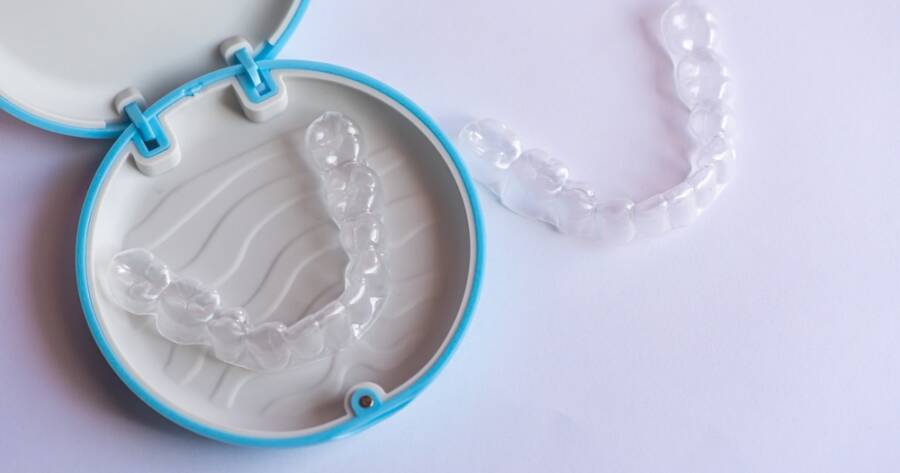Invisible braces, or clear aligners, have transformed orthodontic care by offering a discreet alternative to traditional metal braces. These innovative solutions cater to adults and older teens, providing both aesthetic appeal and effective dental alignment. As the journey unfolds from initial consultation through customized aligner crafting, and continues with disciplined wear and post-treatment retention, each step is vital for achieving a long-lasting, beautifully aligned smile. Discover whether this modern orthodontic option suits individual dental needs.
Understanding the Invisible Braces Treatment
Invisible braces, commonly known as clear aligners, have revolutionized orthodontic treatments, providing a modern alternative to traditional metal braces. These aligners, including popular brands like Invisalign, are crafted from cutting-edge materials designed to fit snugly over the teeth, guiding them into better alignment over time. Unlike metal braces, invisible braces offer more aesthetic appeal because they are almost invisible when worn, making them a preferred option for adults and older teenagers dealing with dental alignment issues like overbites, crowded, or crooked teeth. However, they are not suitable for everyone, especially in severe misalignment cases.
The Initial Consultation and Prequalification
The journey towards achieving a beautifully aligned smile with invisible braces begins with an initial consultation. This crucial step involves a dentist assessing the patient’s oral health to determine the most suitable treatment plan, often involving x-rays or 3D scans of the teeth. These technological tools help in creating a detailed digital model of the patient’s dental structure. By using computer analysis on these models, an accurate treatment plan can be devised to map out the required movement of each tooth throughout the treatment.
Crafting Customized Aligners
Once the treatment plan is in place, the next step is the creation of customized invisible aligners. These aligners are fabricated from a medical-grade material called SmartTrack, known for its snug fit and durability. SmartTrack material applies gentle, constant pressure on the teeth, facilitating their movement towards the desired position. Customization comes from digital impressions captured using advanced technology like the iTero Element scanner, which provides a precise model of the teeth by capturing thousands of images per second. This precision ensures the aligners’ effectiveness in guiding the teeth to the pre-planned alignment.
The Treatment Journey
Wearing the aligners is a commitment that requires discipline and regular monitoring. Aligners must be worn for 18-22 hours daily, only to be removed for eating and cleaning, to ensure effectiveness. Patients receive aligners for several months but need to replace them typically every week or two as the teeth gradually shift. Regular follow-up appointments are scheduled with the dentist to monitor progress and make any necessary adjustments, including issuing additional aligners if required to maintain treatment efficacy. This ongoing supervision helps in tracking improvements and overcoming any unforeseen challenges in the treatment journey.
Post-Treatment with Retainers
Upon completing the active phase of treatment, ensuring that teeth do not shift back to their pre-treatment positions is paramount. Integrally, the use of retainers forms an essential part of maintaining the alignment achieved through invisible braces. Vivera retainers, for instance, are highly recommended for their superior durability and strength. They are reportedly 30% stronger than other clear retainers, providing stability for the long-term. Their design aims to keep the teeth in their newly aligned positions effectively, preventing any setbacks in the alignment process.
Is Invisalign Right for You?
While invisible braces provide an appealing solution for many, they aren’t a one-size-fits-all option. Individuals with mild to moderate dental issues are typically best suited for this treatment, offering enhanced oral hygiene due to their removable nature. However, it’s crucial to recognize their limitations. They are less effective for addressing severe orthodontic problems, where traditional braces might prove more beneficial. The choice of treatment should always be discussed thoroughly with a dental professional, accounting for each individual’s specific needs and dental health conditions.
Why You Should Learn More About Invisible Braces Today
Invisible braces present a host of benefits for those eligible for the treatment. With their discreet appearance and modern technology-driven effectiveness, they provide a promising alternative to conventional methods. Understanding the complete process—from the initial consultation to the post-treatment maintenance—equips potential users with valuable knowledge to make informed decisions about their dental health. Learning about the functionality, benefits, drawbacks, and expectations thoroughly can demystify the process, encouraging more individuals to explore this innovative orthodontic option for a healthier, more attractive smile.
Sources
Insights on Invisalign Technology
Steps in the Invisalign Treatment Journey
